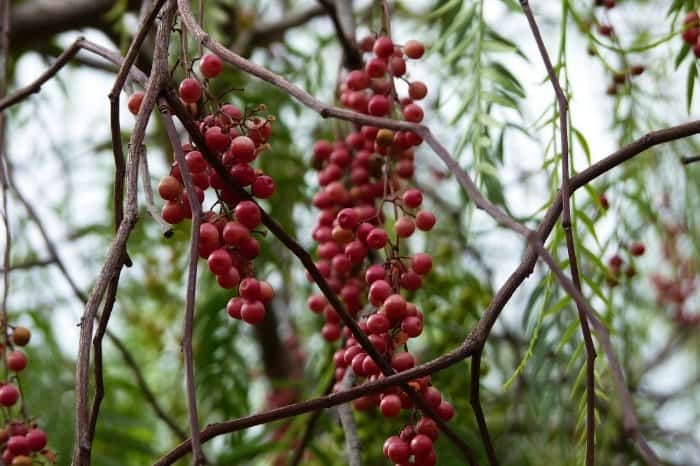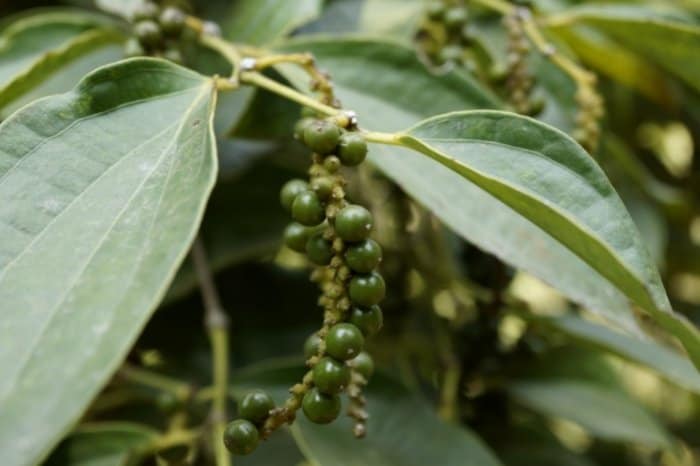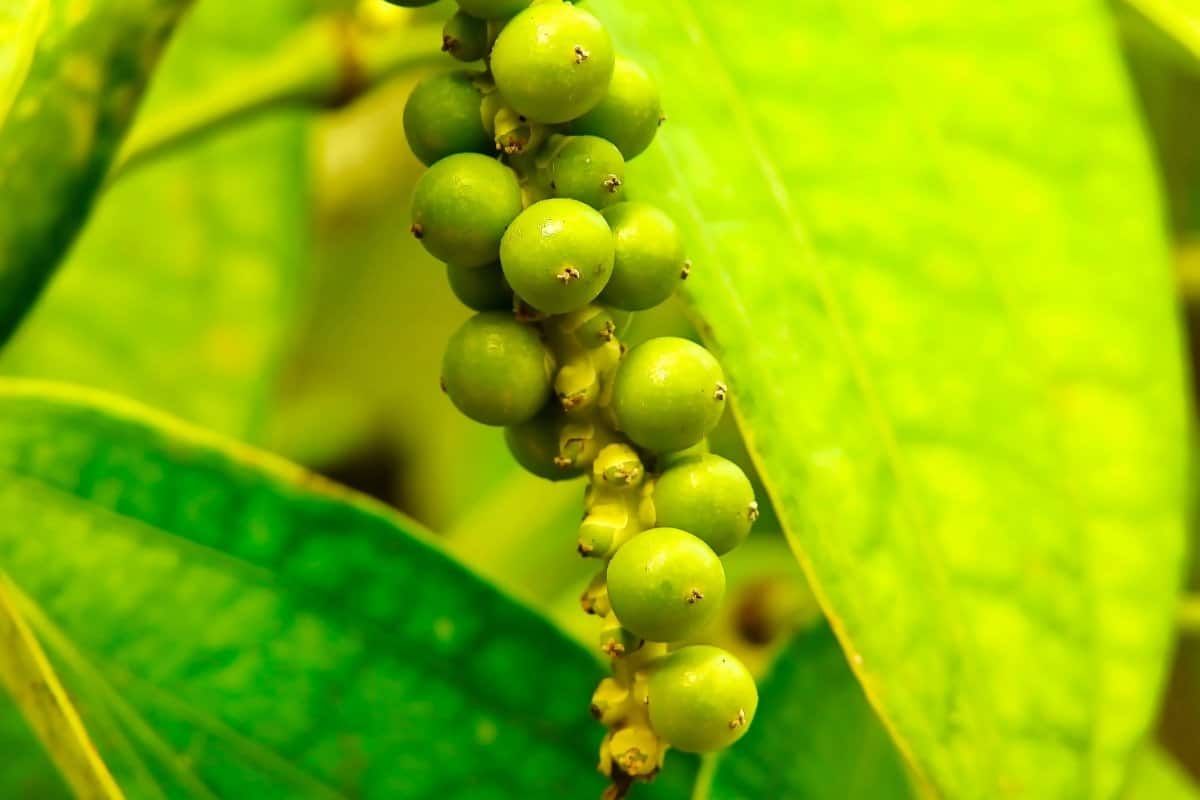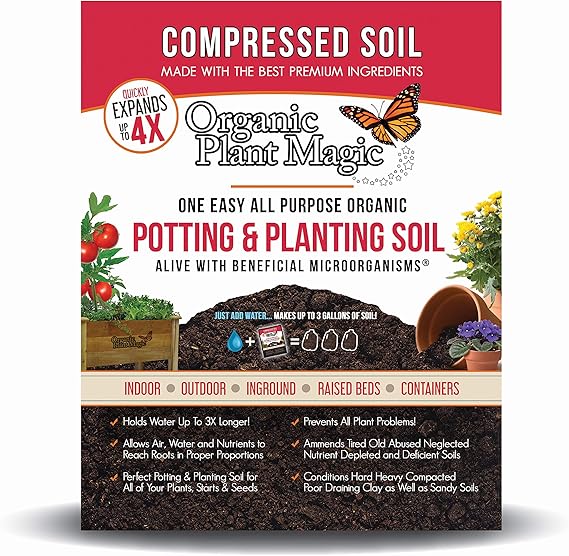Last Updated on January 30, 2022 by
Where does pepper grow– In the garden, in the wild, in cold countries or Did I hear someone say from the store?
Let’s learn how you can grow black pepper plant in your garden – one of the most popular peppers and essential spices across the world
Did you know in the middle ages growing a peppercorn plant was more valuable than gold?
Yes, these rare plants had so much value as a condiment for disguising spoiled meat’s taste and for use in medicinal purposes.
This plant still holds an exotic appeal today that no other plant has had. Peppers are encouraging the wave of healthy eating trends as scientists continue to discover more about their disease-fighting properties.
A study in Food Science and Nutrition reported that black peppers are antimicrobial, antioxidant, anti-inflammatory, antidepressant, and gastro-protective.
What Is A Peppercorn Plant?
Peppercorn plant is a perennial, slow-growing, woody perennial flowering vine, which takes about 4 years to mature to bloom and fruiting size.
This Plant reaches its peak at seven years and remains productive for up to 20 years. It grows up to 13 feet long on poles, trellis, or supporting trees. This plant is a spreading vine, rooting readily when they touch the ground.

Its flower bloom with little tiny flowers that grow up to 6 inches tall. They look like pendulous spikes.
The flowers later develop into fruits as drupes. They appear in immature green bunches like grapes.
Where Does Pepper Grow?
Most gardeners have always wondered where does black pepper come from? Today you will be privileged to learn all about it.
The black pepper plant is native to South India. It is extensively grown in India and other tropical regions like Myanmar, Brazil, and Indonesia.
Black pepper is one of the most commonly grown spices in the world. It thrives in USDA zones 10-11 as a hardy plant.
Caring For The Pepper You Grow
Peppercorn plants grow in tropical areas with hot humid temperatures and filtered light. If you provide your plant with these conditions, it will produce a good harvest. Some of these conditions include:
Soil
Peppercorn plants need rich soil with hummus to retain moisture. The soil must also have good drainage to release the water and not hold it. Heavy soils like clay cause root rot and the death of the plant. Use a light potting mix to amend your heavy soil or add leaf mold or compost as well.
Compressed Organic Potting-Soil for Garden & Plants
Light
Peppercorn should receive full light. The vines need the sun’s energy to produce fruits and flowers. In a greenhouse or indoors, partial sunlight is suitable for healthy growth.
Water
Do not allow your peppercorn plant to dry out. This plant does not like drying out, therefore, water it every time the surface feels dry.
Fertilizer
Peppercorn plants are light feeders. In the spring just when their growth process begins, feed them with fertilizer to help them bloom. Use a fertilizer that has a balance of nutrients 10-10-10 or 20-20-20 fertilizing your plants every two weeks throughout summer. Discontinue feeding in the fall and winter months. You may also a slow-releasing fertilizer that the plant will feed on for a long.
Temperature And Humidity
These plants are classified as USDA zone 12 plants meaning they need hot temperatures to thrive. These plants will stop growing when the temperatures drop below 50 degrees F. With the humid environment, they also appreciate regular misting. If you grow this plant indoors, provide a humid room with some bright light for the vine to thrive.
Mulching
Mulch with organic material to prevent evaporation and growing of weeds.
Controlling Pests And Diseases
The most common disease for this plant is root rot. It happens due to overwatering and can be controlled by watering adequately.
Pests that attack peppercorn plants include aphids, slugs, scale insects, and spider mites that attack these plants even when growing indoors.

Harvesting Peppercorn
Once well-grown you will need to harvest your peppers. You can harvest and use the fruits of peppercorns in three stages through the ripening process.
Harvest the earliest green fruits and pickle them. This renders them soft and not very spicy. If you like your pickles mild, this is a good one to try out.
Harvest peppercorns when they begin to turn red and allow them to dry for a few days. The result is the adored black pepper.
White pepper is harvested at the most mature stage of the ripening fruits. When the berries are fully red, harvest them and remove the outer red husk leaving the white kernel that you can grind like regular black peppercorns.
You can harvest the green, white and black peppers from one single tree. Isn’t that just amazing? The color of each depends on the degree of maturity.
Pepper fruit is always harvested before maturity and dried in the sun as a process of preparation. After sun drying, the pepper fruit is wrinkled and black.
Understanding Similarities and Differences
Similarity
- Green, black and white peppercorns are the same fruit from the same tree but treated differently.
Differences
- Green peppercorns. These are unripe peppers that are preserved through curing, flash-freezing, or bringing to preserve their flavor and color.
- Black peppercorns are dried unripe fruits that have been cooked.
- White peppercorns are dried mature seeds or ripe fruits.
- Pink peppercorns. These are not peppercorns at all but are always mistaken for peppercorns. They are a product of the Peruvian pepper tree and related to cashews and other types of nuts than peppercorns.
FAQs
Where is the most pepper grown?
The most common black pepper comes from India. The majority of it is grown in the Western Ghats region of the country and has the name "Piper nigrum". But this isn't the only pepper that grows in India. Black pepper can also be grown in Sri Lanka, Indonesia, Madagascar, Malawi and Kenya. But no one country grows more than another.
The world's leading exporter of black pepper, India grows the largest crop of black pepper on earth. The Indian government says that it is growing in the Western Ghats (mountains), and not in the eastern lowlands where other countries grow it. But India is not alone. In fact, it is the only country that grows the crop.
Why is Vietnam where the best black pepper is grown?
A lot of people are interested in why the top quality pepper from Vietnam is so much better than all other places.
Vietnam has a higher altitude and the climate is more consistent than elsewhere. In fact, it's the only place I've ever found that grows good peppers. The only problem is that the stuff they grow here is really expensive.
Where is the origin of black pepper?
The origin of black pepper is a subject of much debate. It is thought that black pepper originated in India or Sri Lanka and was spread by the Portuguese and Dutch traders. However, the earliest record of black pepper is from China, and it is believed that the pepper was brought to Europe by Marco Polo in 1275. It was widely traded throughout the Mediterranean and became an important spice in European cooking.
Can black pepper be grown in the United States?
Black pepper plants are grown in tropical countries and subtropical regions. The most common area for pepper planting is India, but it can also be planted in Kenya, Vietnam, and Madagascar. Pepper plants can also be grown in the United States, but this is a relatively new practice.
Growing black pepper in the United States has been made possible by the invention of a new variety of pepper called ‘Baker’s Chocolate’ (aka ‘Baker’s Chocolate’, ‘Baker’s Black’, ‘Baker’s Dark’, or ‘Black’).
Does black pepper grow on trees?
Black Pepper is a tree. It grows in the forests of India. It is very important for cooking and also for medicine.
Black pepper is a spice of the pepper family, so it's not surprising that it can grow in a variety of ways.
Why is black pepper called pepper?
The name of the spice comes from the Latin word "pepra", which meant "pepper" (the plant). It's called "peppercorn" in English because it's a by-product of the process of making wine, and the pepper has been preserved as a whole and ground up.
Conclusion
FAQs
Where is the most pepper grown?
The most common black pepper comes from India. The majority of it is grown in the Western Ghats region of the country and has the name "Piper nigrum". But this isn't the only pepper that grows in India. Black pepper can also be grown in Sri Lanka, Indonesia, Madagascar, Malawi and Kenya. But no one country grows more than another.
The world's leading exporter of black pepper, India grows the largest crop of black pepper on earth. The Indian government says that it is growing in the Western Ghats (mountains), and not in the eastern lowlands where other countries grow it. But India is not alone. In fact, it is the only country that grows the crop.
Why is Vietnam where the best black pepper is grown?
A lot of people are interested in why the top quality pepper from Vietnam is so much better than all other places.
Vietnam has a higher altitude and the climate is more consistent than elsewhere. In fact, it's the only place I've ever found that grows good peppers. The only problem is that the stuff they grow here is really expensive.
Where is the origin of black pepper?
The origin of black pepper is a subject of much debate. It is thought that black pepper originated in India or Sri Lanka and was spread by the Portuguese and Dutch traders. However, the earliest record of black pepper is from China, and it is believed that the pepper was brought to Europe by Marco Polo in 1275. It was widely traded throughout the Mediterranean and became an important spice in European cooking.
Can black pepper be grown in the United States?
Black pepper plants are grown in tropical countries and subtropical regions. The most common area for pepper planting is India, but it can also be planted in Kenya, Vietnam, and Madagascar. Pepper plants can also be grown in the United States, but this is a relatively new practice.
Growing black pepper in the United States has been made possible by the invention of a new variety of pepper called ‘Baker’s Chocolate’ (aka ‘Baker’s Chocolate’, ‘Baker’s Black’, ‘Baker’s Dark’, or ‘Black’).
Does black pepper grow on trees?
Black Pepper is a tree. It grows in the forests of India. It is very important for cooking and also for medicine.
Black pepper is a spice of the pepper family, so it's not surprising that it can grow in a variety of ways.
Why is black pepper called pepper?
The name of the spice comes from the Latin word "pepra", which meant "pepper" (the plant). It's called "peppercorn" in English because it's a by-product of the process of making wine, and the pepper has been preserved as a whole and ground up.
To recap our article, pepper is the most common and used spice in the world. It has existed for thousands of years yet it still provides a flavor that no other spice can.
The peppercorn is the fruit of the plant and depending on when it’s harvested, how it is processed, you can either get green, white, or black pepper from this one tree.
Do not every group the pink peppers here, they are from a different class altogether.
What next except to grow our own tree and enjoy watching its growth process and the fruits it will soon produce. Then we can learn practically how to make all our favorite peppers.
Caroline is a gardener who loves to get down to the nitty–gritty of gardening. She proudly proclaims herself as a ‘dirt worshipper‘ and can often be found deep in the garden, covered in soil and singing to her plants. As a self–proclaimed ‘plant whisperer‘, Caroline believes that plants need love and attention just like any other living thing, and she loves to give them both. When she‘s not tending to her garden, you can often find her researching the latest gardening trends, or teaching others how to make their gardens thrive



